Innovation Ecosystem of CNG Vehicles: A Case Study of Its Cultivation and Characteristics in Sichuan, China
Abstract
:1. Introduction
- (1)
- How is Sichuan’s CNG vehicle IE cultivated?
- (2)
- What are the characteristics of Sichuan’s CNG vehicle IE?
2. The Literature Review of IE
2.1. Origin and Concept of IE
2.2. Structure and Characteristics of IE
2.3. Mechanism and Building of IE
3. Research Design and Data Collection
3.1. Research Method
3.2. Research Case Selection
3.3. Research Tactics and Data Collection
4. Case Description: Three Phases of the IE Cultivation
4.1. Phase 1: The Birth of Sichuan CNG Vehicle Industry (1990–2000)
4.2. Phase 2: The Extension of Sichuan CNG Vehicle Industry (2001–2010)
4.3. Phase 3: The Formation of Sichuan CNG Vehicle IE (2011–Now)
5. Discussion: The CNG Vehicle IE
5.1. Cultivation Path of the CNG Vehicle IE
5.2. Symbiosis among the Communities within the CNG Vehicle IE
5.2.1. Government Community Is a Propeller for Other Communities
5.2.2. Product Enterprise Community Is the Focus for Other Communities’ Innovation
5.2.3. Complementary Product Enterprise Community Is the Premise for Other Communities
5.2.4. Customer Community Is a Power Supply for Other Communities
5.3. The Substitutability between CNG Vehicle IE and Other Vehicle IEs
5.3.1. The Substitutability between CNG Vehicle IE and Other Vehicle IEs
5.3.2. The Substitutability between the Similar Communities of Vehicle IEs
5.3.3. The Substitutability between the Enterprises in the Communities of CNG Vehicle IE
6. Conclusions: Theoretic, Practical Significance and Policy Implication
6.1. Theoretical Significance
6.2. Practical Significance
6.3. Policy Implication
Acknowledgments
Author Contributions
Conflicts of Interest
Appendix A
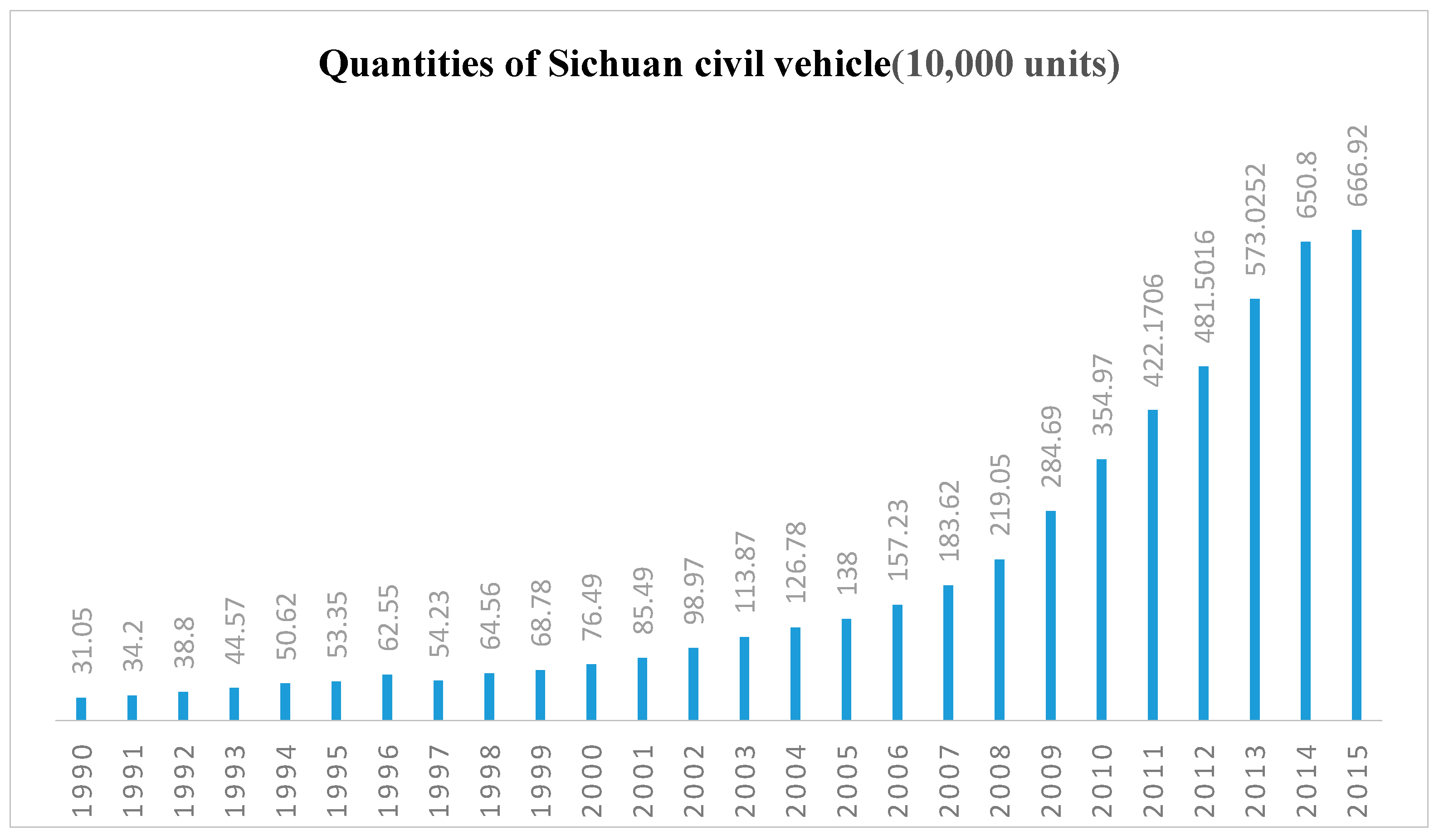
References
- Hwang, V.W.; Horowitt, G. Silicon Valley Ecosphere: Innovative Rainforest Laws; China Machine Beijing Press: Beijing, China, 2015. [Google Scholar]
- Feng, W. Interaction between industrial agglomeration and circular economy. China Popul. Resour. Environ. 2008, 18, 166–172. [Google Scholar]
- Adner, R. Match your innovation strategy to your innovation ecosystem. Harv. Bus. Rev. 2006, 84, 98–107. [Google Scholar] [PubMed]
- Luoma-aho, V.; Halonen, S. Intangibles and innovation: The role of communication in the innovation ecosystem. Innov. J. 2010, 7, 1–20. [Google Scholar]
- Zahra, S.A.; Nambisan, S. Entrepreneurship in global innovation ecosystems. AMS Rev. 2011, 2011, 4–17. [Google Scholar] [CrossRef]
- Adner, R.; Kapoor, R. Value creation in innovation ecosystems: How the structure of technological interdependence affects firm performance in new technology generations. Strateg. Manag. J. 2010, 31, 306–333. [Google Scholar] [CrossRef]
- Zeng, G.; Gou, Y.; Liu, L. From innovation system to innovation ecosystem. Stud. Sci. Sci. 2013, 1, 4–12. [Google Scholar]
- Rohrbeci, R.; Hölzle, K.; Gemünden, H.G. Opening up for competitive advantage—How Deutsche Telekom creates an open innovation ecosystem. R&D Manag. 2009, 39, 420–430. [Google Scholar]
- Birol, M.; Göktas, D. Components of innovation ecosystems: A cross-country study. Int. Res. J. Financ. Econ. 2011, 76, 102–112. [Google Scholar]
- Rubens, N.; Still, K.; Huhtamaki, J.; Russell, M.G. A network analysis of investment firms as resource routers in Chinese innovation ecosystem. J. Softw. 2011, 6, 1737–1745. [Google Scholar] [CrossRef]
- Curley, M.; Salmelin, B. Open Innovation 2.0: A New Paradigm; OISPG White Paper; European Commission: Brussels, Belgium, 2013; pp. 1–12. [Google Scholar]
- Gray, B.; Bayley, S. Case Study: Shelter Innovation Ecosystem; Working Paper for the Humanitarian Innovation Ecosystem Project; University of Brighton: Brighton, UK, 2015. [Google Scholar]
- Autio, E.; Kenney, M.; Mustar, P.; Siegel, D.; Wright, M. Entrepreneurial innovation: The importance of context. Res. Policy 2014, 43, 1097–1108. [Google Scholar] [CrossRef]
- Hansen, M.T.; Mors, M.L.; Løvås, B. Knowledge sharing in organizations: Multip1e networks, multiple phases. Acad. Manag. J. 2005, 48, 776–793. [Google Scholar] [CrossRef]
- Gawer, A.; Cusumano, M.A. Industry platforms and ecosystem innovation. J. Prod. Innov. Manag. 2014, 31, 417–433. [Google Scholar] [CrossRef]
- Zhang, W.; Karimi, H.R.; Zhang, Q.; Wu, S. Collaborative development planning model of supporting product in platform innovation ecosystem. Math. Probl. Eng. 2014. [Google Scholar] [CrossRef]
- Arimoto, T.; Levien, R. Strategy as Ecology. Harv. Bus. Rev. 2004, 4, 51–62. [Google Scholar]
- Engler, J.; Kusiak, A. Modeling an innovation ecosystem with adaptive agents. Int. J. Innov. Sci. 2011, 3, 55–68. [Google Scholar] [CrossRef]
- Liu, H.; Hu, Y.; Ma, W. Ecological system suitability of regional innovation and correlation of economic development. Chin. J. Manag. Sci. 2013, 2, 764–770. [Google Scholar]
- Liu, D.; Yan, C. Research on the structure and mechanism of collaborative innovation network. Manag. World 2013, 12, 1–4. [Google Scholar]
- Wu, J. Innovation Ecosystem Theory; Tsinghua University Press: Beijing, China, 2015. [Google Scholar]
- Rabelo, R.J.; Bernus, P. A holistic model of building innovation ecosystems. IFAC PapersOnLine 2015, 48, 2250–2257. [Google Scholar] [CrossRef]
- Li, H.; Song, J. Integration and evolution of innovation ecosystem resources: A case study on China’s industry technology innovation strategic alliance. China Soft Sci. 2014, 2, 129–141. [Google Scholar]
- Walsham, G. Interpretative case studies in IS research: Nature and method. Eur. J. Inf. Syst. 1995, 4, 74–81. [Google Scholar] [CrossRef]
- Eisenhardt, K. Case Study Research Method: Selected Articles; Peking University Press: Beijing, China, 2012. [Google Scholar]
- Patton, M.Q. How to Use Qualitative Methods in Evaluation; Sage Publications: Thousand Oaks, CA, USA, 1987. [Google Scholar]
- Glaser, B.G.; Strauss, A.L. The Discovery of Grounded Theory: Strategies for Qualitative Research; Transaction Publishers: Piscataway, NJ, USA, 2009. [Google Scholar]
- Yin, R.K. Case Study Research: Design and Methods; Sage Publications: London, UK, 2013. [Google Scholar]
- Pan, S.L.; Tan, B. Demystifying case research: A structured-pragmatic-situational (SPS) approach to conducing case studies. Inf. Organ. 2011, 21, 161–176. [Google Scholar] [CrossRef]
- Zou, K. Development of CNG vehicle to be speeded up in Sichuan. Nat. Gas Oil 1996, 14, 53–57. [Google Scholar]
- Wu, Y. Imperative development of compressed natural gas (CNG) automobile. Nat. Gas Ind. 1994, 14, 81. [Google Scholar]
- Chen, G. Information compilation of natural gas vehicle industry. Nat. Gas Ind. 1996, 16, 113. [Google Scholar]
- Guo, F.; Huang, M. UNDERGROUND storage of compressed natural gas. Nat. Gas Ind. 1996, 16, 102–103. [Google Scholar]
- Bian, X. Development of China’s gas-fuelled automobiles: Current situation and prospects for the 10th five-year plan period. Int. Petrol. Econ. 2001, 9, 35–37. [Google Scholar]
- Yao, S.; Zhang, C.; Huang, H.; Li, Y.; Liu, Z. Profit assessment of the intercity transportation of CNG vehicles in Sichuan province and some proposals for promoting its practical application. Nat. Gas Ind. 2012, 32, 104–107. [Google Scholar]
- Yang, J.; Li, Y.; Huang, H. Research of CNG/gasoline dual fuel vehicle emissions based on measurements of double idle speed. Small internal combustion engine and motorcycle. China Acad. J. 2012, 41, 32–35. [Google Scholar]

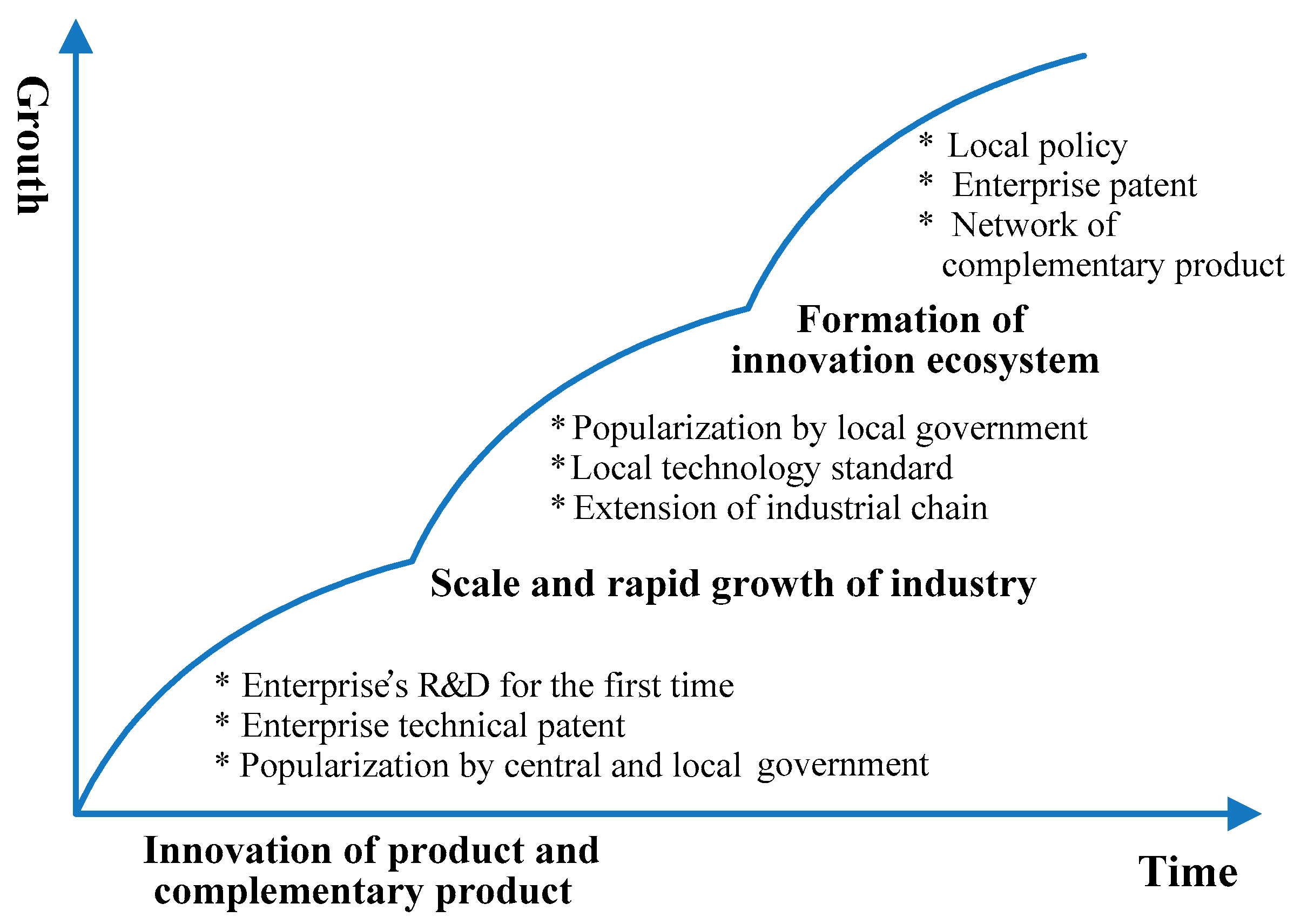

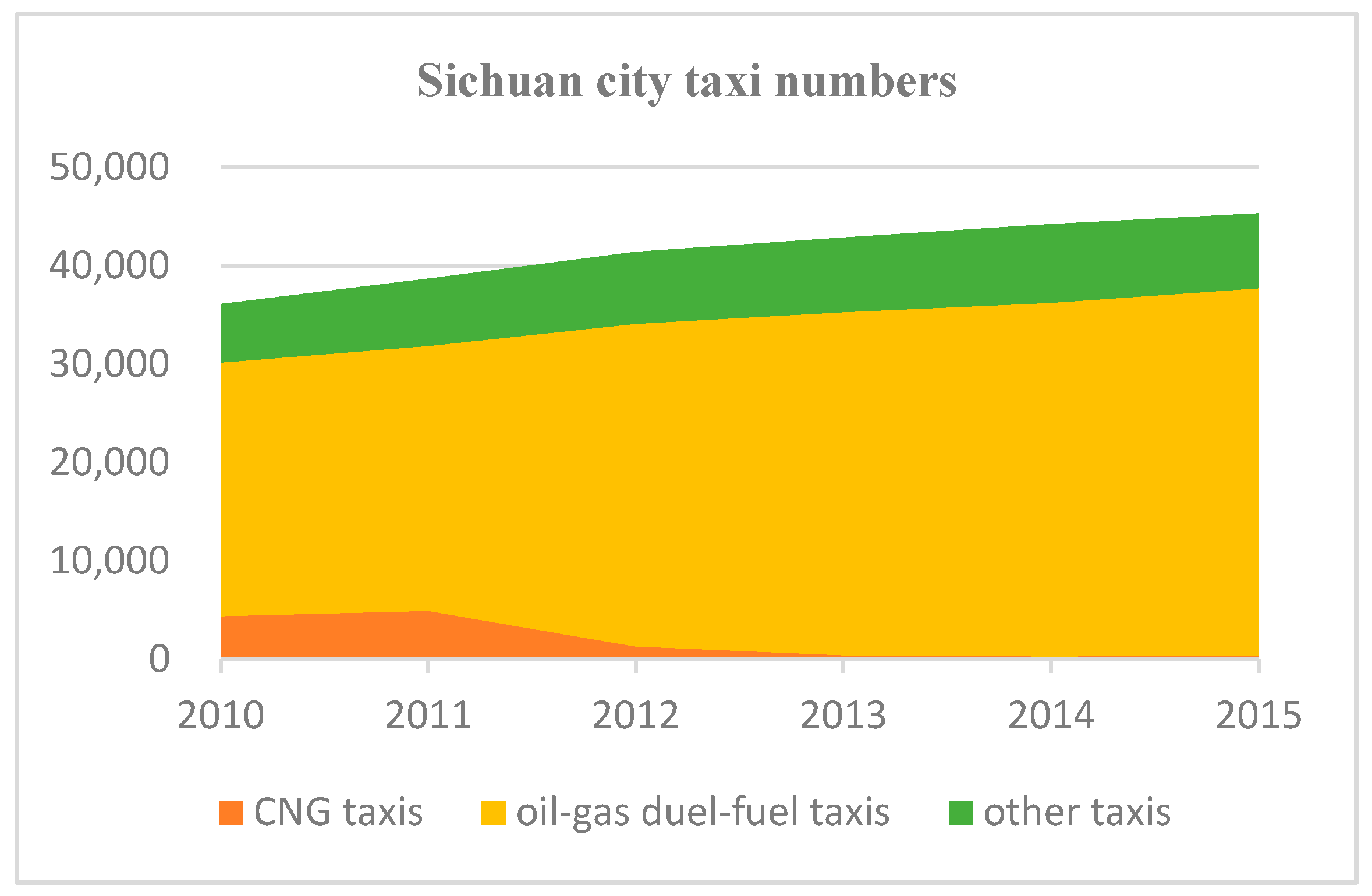
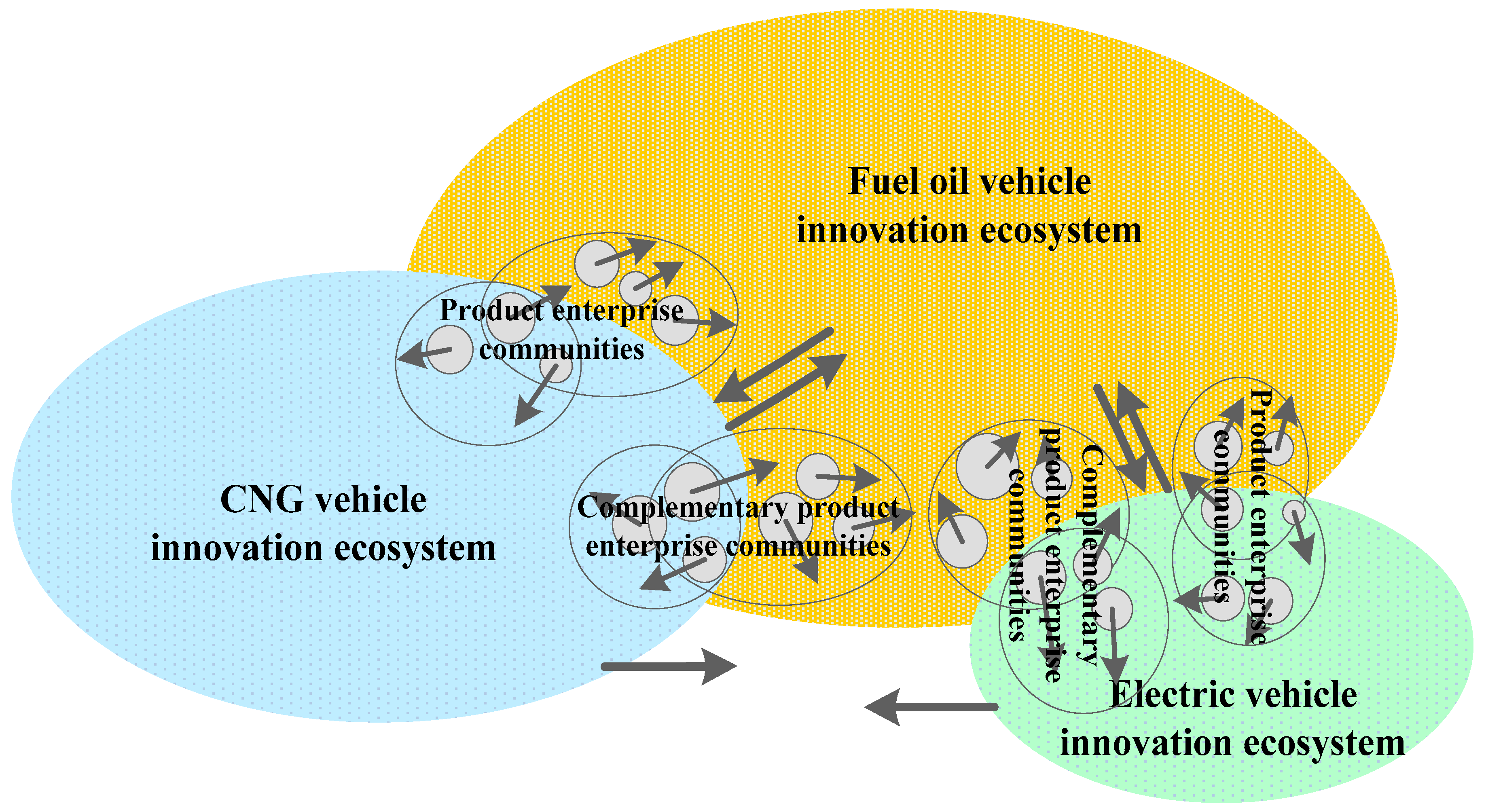

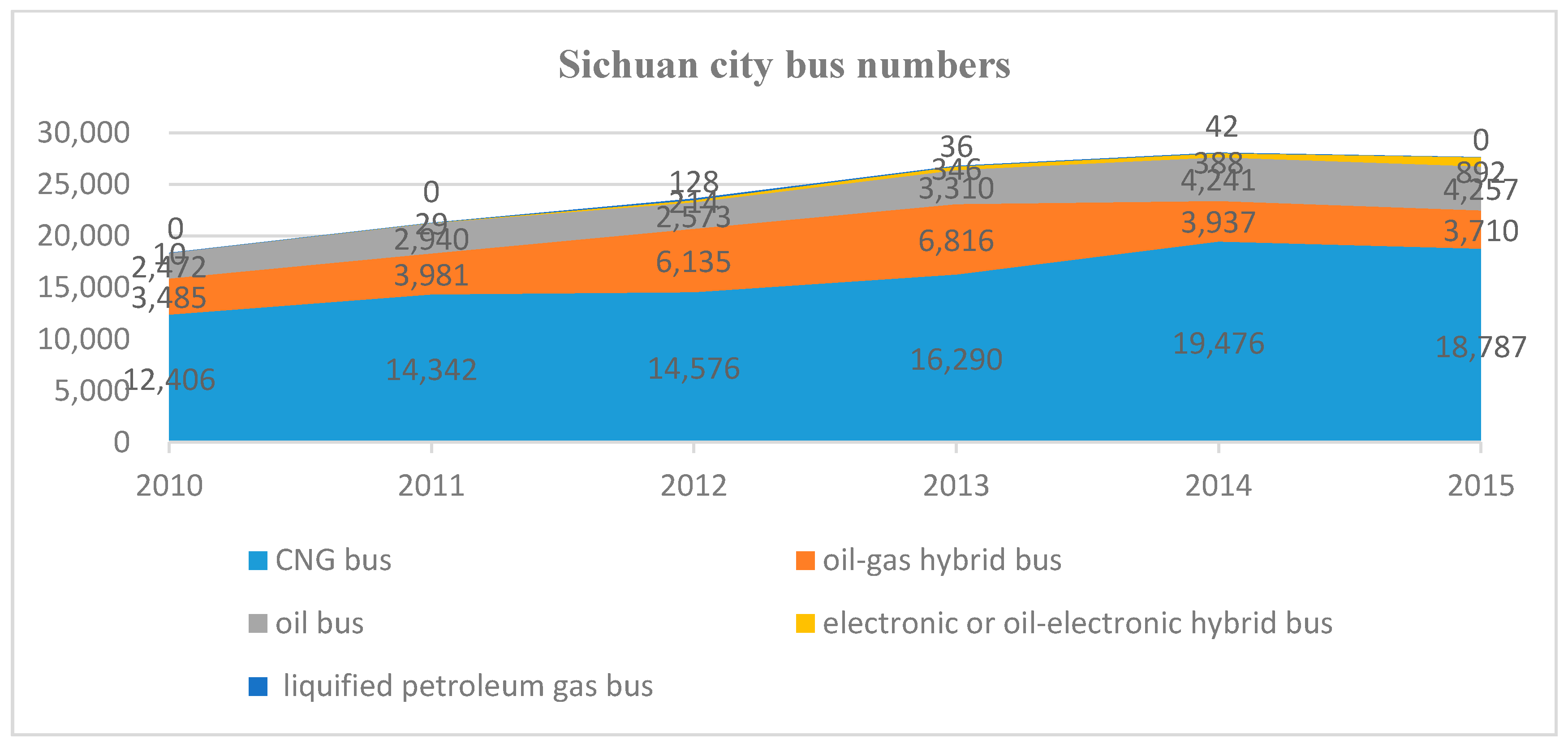
© 2017 by the authors. Licensee MDPI, Basel, Switzerland. This article is an open access article distributed under the terms and conditions of the Creative Commons Attribution (CC BY) license (http://creativecommons.org/licenses/by/4.0/).
Share and Cite
Ding, L.; Wu, J. Innovation Ecosystem of CNG Vehicles: A Case Study of Its Cultivation and Characteristics in Sichuan, China. Sustainability 2018, 10, 39. https://doi.org/10.3390/su10010039
Ding L, Wu J. Innovation Ecosystem of CNG Vehicles: A Case Study of Its Cultivation and Characteristics in Sichuan, China. Sustainability. 2018; 10(1):39. https://doi.org/10.3390/su10010039
Chicago/Turabian StyleDing, Ling, and Jinxi Wu. 2018. "Innovation Ecosystem of CNG Vehicles: A Case Study of Its Cultivation and Characteristics in Sichuan, China" Sustainability 10, no. 1: 39. https://doi.org/10.3390/su10010039



